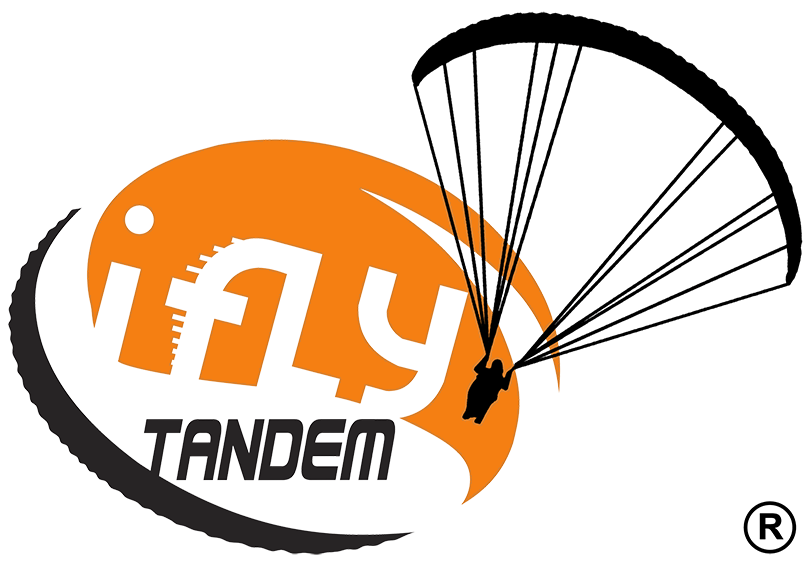I Fly Tandem
Phases of flight
The meeting up
Based on the pre-planned time of the activity, the meeting place with the Drivers / Instructors is located at the external entrance of the buildings: Molveno cableway departure or Andalo “Paganella.2001” cableway departure. (SEE THE MAP BELOW) From here you will go up all together to the take-off area, in this moment of “Pre-Flight” time on the ski lifts you have the opportunity to have a chat with our Pilots who will introduce the experience that will be made.
Take off
If you are at your first experience in paragliding, it is perfectly normal to feel a little anxious. The advice is to rely on the experience and preparation of your Pilot / Instructor who have had years of flight experience and performed many tandem flights.
During the “Pre-Flight Briefing” or explanatory technical report the Pilot / instructor will explain to you in a very simple and intuitive way how to perform the take-off. Many think that the paraglider pilot jumps off some mountain. This is not so, you will take off from a slope, where the first phase is the inflation of the wing which is performed with a gradually increasing walk, thus allowing the paraglider to inflate with air and take on its aerodynamic appearance by positioning itself on the above the pilot. By increasing the pace, the paraglider begins to generate lift, a physical phenomenon that allows the wing and the pilot and passenger to break away from the ground and take off. When there is a light frontal breeze, the take off will happen with only a few steps and metres. (For winter flying activities it is also allowed to take off with skis on, instead of a jog it becomes a simple “slide” of a few meters with parallel skis).
The flight
Once in flight, the anxiety accumulated during take-off (which is normally felt at the first experience) vanishes and, according to everyone, it is immediately replaced by the sense of security that the glider transmits. At this stage, you are not hanging, as some may think, in the vertical position of a jump paratrooper but you are seated comfortably in the specially designed harness. The pilot is positioned behind the passenger where he will perform the initial turns in a very gradual way, explaining from time to time the various dynamics of piloting and how you can take advantage of the updrafts. Paragliding is a very slow flying vehicle, the relative wind speed that can be felt in flight is around 35-40 Km / h. In this phase in flight we offer our Photo & Video service included in the cost (SEE THE PHOTO & VIDEO LINK), a “Must” to show to relatives and friends, an indelible memory that we deliver on SD-Card immediately at the end of the activity.
Landing
Based on the wind present at the time of landing, the Pilot will adopt two techniques: In the absence of wind, a “sledding” landing is carried out, i.e. you remain seated in the harness by raising your legs using the impact protection placed under the seat to land easily on the grass without having to complete the disposal run. On the other hand, if a little wind is present at the time of landing, the pilot manages to reduce the speed of the paraglider to practically zero and land the pilot and passenger in an upright position very gently, a bit like descending from an escalator.
Back with your feet on the ground, you will realize that you have completed a unique experience, and be aware of the sense of freedom you felt up there in flight.


